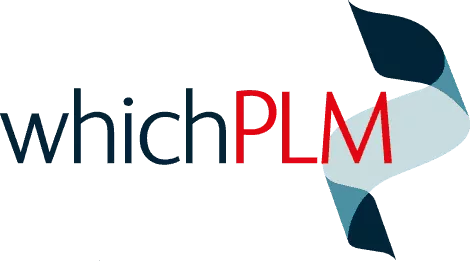
In his latest exclusive for WhichPLM, our Founder, Mark Harrop, shares his thoughts on the latest technology to hit the Fashion industry.
For the last four decades I’ve been studying, what I like to call today, ‘fashionology’. This encompasses the ever-growing list of technologies that, since the late 1970s, have been making incremental changes in the fashion value chain, as well as some amazing technologies that, practically over night, have gone on to disrupt our supply chain forever. These include the likes of CAD, CAM, PDM, PLM, and 3D. Computerisation can take decades, but eventually it gains momentum to become the new norm, and these technologies change the supply-chain, killing any retail competition lagging behind the fashionology wave.
The Dawn of Fast Fashion
With supply-chain technology at its fastest, on (fateful and infamous) 11th September 2001 I had the opportunity to meet and take lunch with the senior management team at Inditex; at the time they had just moved into their brand new headquarters located in Arteixo, Coruña (the port city in the Galicia region of northwest Spain). Although already well known in fashion at that time, the business had just been listed on the Madrid Stock Exchange and was in rapid growth mode. Back in 2001 Inditex used its catchment of local CMT (Cut Make & Trim) suppliers, supported by its “smart” use of CAD (Creative Design), 2D Pattern Design Engineering, and CAM (Computer Added Manufacturing) & NC (Numerically Controlled) Cutting Systems – all of which were located in Coruña.
It was back then that the term “Fast Fashion” came to be, and the race was now on to become fast! At that time very few retailers or brands understood what the term meant and many just continued working in the same old ways, unwilling to change. Many of these famous retailers and brands (or, technology laggards) thereafter went into bankruptcy and disappeared from the fashion scene.
Around the same time PLM (Product Lifecycle Management) was born into the fashion industry and, ever since, we’ve witnessed a steady pace of disruptive technologies that continue to speed the development of change. Most of these technologies have been driven by the commercialisation of the Internet in the late 90s. Most recently, we have seen further disruption and advances in supply-chain connectivity, and the rapid deployment of cloud-based solutions and services that offer greater accessibility to new affordable technologies. PLM platforms were not the first to partially digitise the fashion supply-chains; in fact it was PDM (Product Data Management) started this in the late 1980s. Modern PLM solutions combine a broad list of design and development processes and offer a range of API (Application Protocol Interfaces) to several key technology platforms – 2D CAD, Creative Design, Planning, Costing, Sourcing, CSR (Corporate Social Responsibility) etc. – making it easier for companies to compete in the world of fast fashion.
Retailers, brands and extended supply-chain partners must now embrace the next wave of disruption in connectivity and transparency, or face becoming the next casualties of the high-street – and it’s not just the high-street, but also eCommerce businesses that will face these challenges. Although they are closer to consumers with mobile purchasing etc. they are nowhere near where they need to be when it comes to backend supply-chain connectivity requirements. They haven’t even made it to first base!
It’s Time to Ride the Next Wave of Fast Fashionology!
So, what should they do next? These businesses need to identify the emerging technologies that will disrupt retail and brand supply-chains. There are already waves of change taking place as I write this article: PLM continues to expand its long list of processes; 3D design solutions supporting a broad range of fashion clothing and accessories are starting to revolutionise the way that we can design and sample products; digital printing of accessories is making its presence known; digital printing directly on clothing is a reality today even in the retail store and most revolutionary is direct digital printing to material roll, used for sampling, small order quantities or even large production runs, but all at a fraction of the cost with lower stock turns, reduced inventory time & cost and of course the time taken by present offshore production methods!
The combination of speed and connectivity driven by cloud mobile computing, the IoT (Internet of Things), Blockchain (for authentication and real-time transparency amongst other use cases), data analytics & intelligence will enable faster, direct trusted connections with consumers and extended supply-chain partners across all tiers including: products, materials, trims, components and packaging. Not to mention other 3rd parties that are involved in bring product to the consumer.

Retail & brand leaders are already starting to use cognitive computing and machine learning to enable connected supply-chain hardware and software solutions to learn, adapt and optimise themselves in line with consumer driven demand. The use of Internet of Things (IoT) Intelligent devices will enable further connectivity to a range of hardware including material handling systems, spreaders, cutting systems, sewing machines, pressing and finishing machines as part of the connected supply chains of the future. And let’s not forget that retailers and brands are already using IoT solutions as part of smart wearable clothing that, in the future, will find its way into everyday clothing items providing data on the product from its birth to grave, including its lifecycle through each stage of production onto shipping and into the hands of the consumer, and providing added consumer intelligence to teak future designs.
Like I’ve stated, the IoT is already a part of our daily lives and will continue to grow at an accelerated pace in the next couple of years. The increasing collection of connected devices, known as the Internet of Things, will deliver greater opportunities for retailers and brands to make their operations more efficient by connecting and automating elements of the design, inventory, manufacturing, logistics, fleet management systems and extended supply chain partners to realise massive benefits. With such a rapidly evolving digital landscape, it’s not enough for retailers and brands to be looking at how technology innovation is disrupting their businesses today. They also need to be carefully considering the future to understand what’s on the horizon; they need to begin planning for what’s coming next, now.
I have been writing and talking about Mass Customisation, Made To Measure and Made To Order for the last two decades. But, today we are at the point where retailers and brands can use data driven intelligence to more accurately predict the demand curve, deliver product with no inventory, no need for minimum quantities or increased cost for small orders, massive improvements on quick response, full margin sales and very low return rates. Consumers will be able to improve their own sizing problems with personal 3D scanners and will be allowed to personalise or even design their products, enabled by a range of creative 3D scanners (the technology is available now!) and design solutions. On-demand textile digital printing, and whole garment knitting machines, too, are just some of the new disruptive platforms that are already reshaping the fashion sector.
So, while I began this article by looking backwards, it was more than just an arbitrary history lesson. With each passing week, I become more convinced than ever that we live in a dramatically different world than we did less than a decade ago, and while “disruptive” is the word that’s deployed most often to label new technologies like machine learning, I prefer a more positive slant. I’m thankful every day that I get the chance to live through such a significant change in our industry and society and I’m thrilled that PLM as a methodology and an enabling solution platform remains such an essential part of fashion’s future.
Spotting the next disruptive wave of technology in fashion is what myself and the team of experts and researchers at WhichPLM do every day; to avoid missing the next wave of fashionology, stay tuned.





